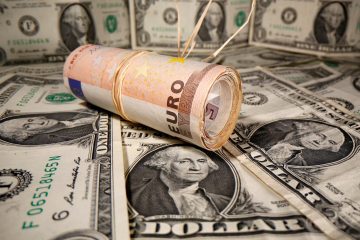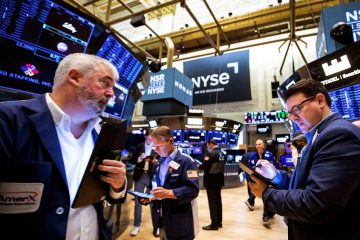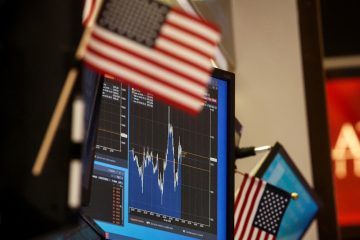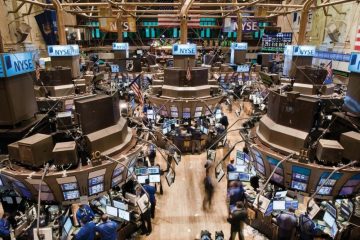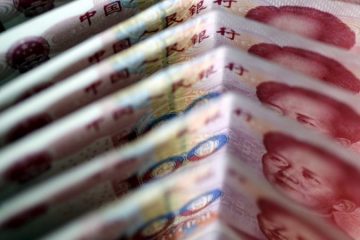Time to Sell Like It’s 2011?
Bad economic data and another mediocre earnings season did their job this year – they helped push stocks to new highs. That’s because the market is nothing if not forward-looking and ever-hopeful that next quarter will be better than the last one.
But the exhausting, sideways, “meat grinder” of a market I wrote about in May finally started breaking down in June when internal breadth showed that more stocks were being sold than bought. Fewer and fewer mega-caps were holding the indexes near their highs.
And now that we finally have a catalyst – China’s currency devaluation – to push the market out of this trading range between S&P 2040 and 2130, the path seems ripe for a bigger correction.
So, have we seen the top in the stock market and is it time to take your money and run?
Here are 3 questions you need to address to answer that one…
1) Is China Really the Cause?
As I said, the market was already exhibiting classic “topping” behavior with the 6-month rolling meat grinder, just like February through July of 2011. In June, the percentage of stocks in the S&P 500 above their 200-day moving average slipped from 70% to 50%.
In fact, by mid-July over half of the index had stocks in correction territory, defined as being down more than 10% from their 52-week highs.
So the “stealth” correction in US stocks was already in motion before China devalued their currency. The yuan dive was just the catalyst to break near-term support at S&P 2070.
But China’s action does present a new problem for the market. Because if a strong US dollar was a negative for earnings before, it just became a bigger worry now.
We have to answer this question in favor of the bears and in favor of more stock market corrective action if support at S&P 2050 gives way. A 5% to 8% slide to stronger support between 2020 and 1970 is in the cards then.
2) Is a Recession on the Horizon?
Worried about a bear market in stocks? Don’t be unless you think there’s a recession around the corner. That is the number one, unequivocal cause of bear markets.
But, we can still get a big, fat correction of 10-20% simply on greater fear of a recession. When my “recession probability” climbs above a 25% chance, I am indeed worried that large market players will begin selling stocks in earnest.
That’s because institutional investors often sell first and look for evidence later. You need look no further than 2011 for the most recent example. Four years ago in August, the “debt ceiling debacle” was the catalyst much like China’s currency move could be this month.
Then the S&P corrected 19% and bounced around for two months in that cellar while players watched Washington games and calculated their recession probabilities over and over again.
What’s also similar to 2011 is that while large investors tried to figure out if Congress would further damage the economy (not just our AAA-credit rating), now they are trying to figure out how much the strengthening dollar will damage GDP.
We have to answer this question with a “tie” between bulls and bears. We just don’t know enough yet.
3) What Will the Big & Smart Money Do?
And now it’s time for the tie-breaker. While I love looking at the technical view of the market and the fundamentals of the economy and earnings, I also seek to understand and follow the big players as they strategize and deploy their billions of dollars in AUM (assets under management).
I’m talking, of course, about institutional investors who must file their holdings with the SEC if they manage over $ 100 million. This big-and-smart-money class does deep homework, not just on stocks they buy but also on the economy, interest rates, and global market forces.
After studying dozens of the top investors in the world — and their investing styles and holdings — for several years, I come to this conclusion right now:
These “whales of Wall Street,” as I like to call them, are itching to buy a deeper correction because they believe this economic expansion has more room to run and they know the world’s central banks will remain a tailwind for growth.
If valuations were questionable and bubbles were appearing in several asset markets, they and I might feel differently.
But right now, all signs point to any market correction being bought aggressively because they learned their lesson in 2011. The recession is not coming. And though valuations are richer than 2011, there are also more policy tailwinds than headwinds.
My advice is to have your shopping list ready over the next few weeks. And study some whales too to know exactly which stocks to buy at this point in the cycle.
Whale Watching Made Easy
One of the most effective stock strategies for any market condition is to watch where the smart money is starting to go and then jump aboard for the full profit ride. Of course, catching the earliest entry points of professional money managers is difficult for individual investors because it eats up a tremendous amount of time and toil.
That’s why I invite you to look into my Zacks Follow the Money Trader.
This portfolio starts by exploring a vast, ever-changing database to detect the best trades before funds and plans fully build their positions. Then we distill those moves even further through our proprietary fundamental and technical indicators. Finally, we issue “buy” alerts before other institutions join in and drive up the prices. Currently, only 7 stocks make the grade as FTM recommendations.
FTM has far outpaced the S&P 500 with a gain of +17.4% in the first half of this year. Another reason to check it out now is that you are also invited to download our best short-term stocks through a free Special Report, Zacks’ 7 Must-Own Stocks for September, 2015. But please note that this opportunity ends midnight Sunday, August 16.
See Follow the Money Trades and the Free September Stocks >>
Good Investing,
Kevin Cook
Kevin, a Senior Stock Strategist at Zacks, is a recognized authority on global markets and noted for predicting and tracking the movement of smart money. He provides commentary and recommendations for the Zacks Follow the Money Trader.


